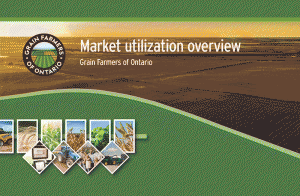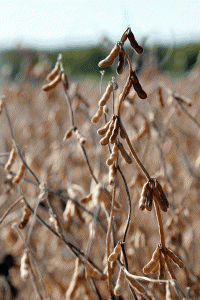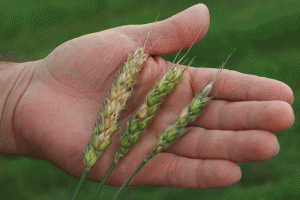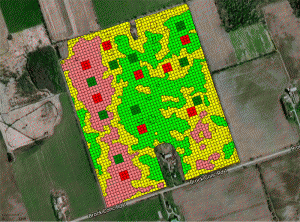Developing local barley
NEW HIGH QUALITY, HIGH YIELDING BREEDING PROGRAM

MOST PEOPLE DRIVEN to buy local food and beverages have clear expectations. They figure the ingredients in the products they’re purchasing will be grown or raised within a certain distance of their homes — say, within 100 miles, a classic definition of “local”. And they’d like to think that if they really wanted to, they could drive by the farms where the ingredients were grown, or raised, and have their belief in local confirmed.
But as commodities become processed goods, remaining true to a strict definition of local isn’t so easy. Take craft beer, for example. For most brands, once you get past its water source, you’ll be hard pressed to find significant Ontario content.
Availability is increasing for some essential ingredients such as local hops and yeast, thanks to efforts by the province, the Ontario Hops Growers Association, and others. Yet barley development is trailing behind. Even though Ontario farmers grow about 115,000 acres of barley, most of it goes to livestock feed and human consumption. Only when oats and barley came under the auspices of Grain Farmers of Ontario in 2015 did barley research finally have a commodity group to champion its cause.
Today, most of the high-quality barley malted for Ontario beer brewing comes from outside the province, typically western Canada. It’s a superb commodity, but it’s not considered local in the same way Ontario breweries in towns or regions such as Creemore, Guelph, the Muskokas, or Hockley Valley consider their water local.
Now, a barley research program at the University of Guelph is aiming to open up the crop in Ontario, and in particular, help increase production and supply for the province’s 150-plus craft breweries.
IMPROVING GENETICS
In Guelph’s Department of Plant Agriculture, professors Lewis Lukens and Ali Navabi are working together to improve existing barley genetics and develop new high quality, high yielding barley lines that can be malted for craft beer.
Their research, which started in early 2016, has three parts.
First, they’re launching an active breeding program, using barley cultivars developed by breeders outside of Ontario, including Western Canada and the United States (Lukens has evaluated over 200 American malting barley lines, including some from Minnesota and New York State). A selection of these lines are being crossed with Ontario varieties; others are being grown “as is” to see how they adapt to Ontario conditions.
As well, Lukens and his lab are mutating an elite Ontario barley line called Dignity, to generate new, novel genetic variations. In nature, new varieties are a result of genes that spontaneously change or mutate, and offer up a novel trait. In the lab, Lukens and his team are hastening the process, through a technique called mutagenesis which changes heritable traits.
Lukens says the benefit of mutagenesis is that it starts with a high performing cultivar. That’s different than crossing cultivars, then waiting and hoping the cross expresses superior or novel traits.
“Crossing cultivars generates highly variable plants,” he says, “but many of these novel variants perform worse than the starting cultivar.”
And third, they’re selecting for what’s called stay-green barley. It’s a highly heritable trait that a plant species maintains green leaves long after flowering and after heat or water stress.
DISEASE RESISTANCE
Disease resistance is a key to developing high-quality malting barley in Ontario. Compared to western Canada, Ontario’s comparatively damp and humid environment can lead to Fusarium head blight. So for his part, Navabi is focussed on developing two-row barley, which has a more open floret structure than six-row barley, and is less susceptible to Fusarium taking hold.
“Yield is sometimes lower with two row barley, but it has a better quality grain specifically for malting, mainly because it has less disease,” says Navabi.
During the 2016 growing season, the first of the western varieties — about 150 lines from Alberta and Manitoba — were field tested on a two-acre plot at Cribit Seeds, near St. Jacobs. Navabi says it was a relatively disease-free year, so Fusarium resistance really couldn’t be determined. However, testing was conducted for other traits too, including yield, flowering, heading, height, and physiological maturity.
From this set, six lines will be tested this growing season for malting quality traits in collaboration with Agriculture and Agri-Food Canada researchers in Manitoba. Tentative plans call for further field testing at Cribit Seeds again, as well as at Elora, Woodstock, and Winchester, with two to three replications at each site. Navabi has also started making new crosses, using selected lines from new introductions to generate diverse populations, from which varieties can be extracted in due time.
In 2018, the first of the mutated lines will be field tested.
Navabi says their efforts are all part of the drive to promote new genetic diversity in Ontario barley. He hopes to have new varieties in official Ontario registration trials in four years.
“Genetic improvement of barley in Ontario has a bright future,” he says. “Without genetic improvement, the quality and productivity of the current crop will likely decrease gradually, although new disease pressures could cause a rapid decline. Improved variety development will enhance barley yields and quality, and increase their value.”
This research is funded by Grain Farmers of Ontario, SeCan, and Growing Forward 2 (GF2), a federal-provincial-territorial initiative. The Agricultural Adaptation Council assists in the delivery of GF2 in Ontario. •












